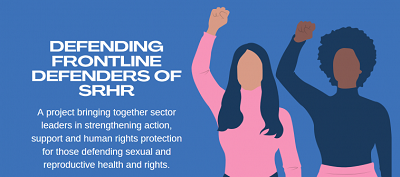As part of the main drivers of the BAM Group of Companies, this being the umbrella company within which Informative Newspaper operates, alongside sister brands Finite Magazine, Finite Lifestyle Club, Bam Promotions and Twin Talk, Informative Newspaper takes particular interest in social issues and causes created to advance the development of young girls and women and their participation in the global space.
To advance and cement the organization’s support for women and young girls, the Sexual and Reproductive Health and Rights is today, through this issue introduced. Its purpose is to advance knowledge and create further awareness on developments surrounding the said community sector and to help audiences stay updated on such, further guiding means of both action and reaction to these developments.
The journey continues…
Background to HIV, SRHR and human
rights in SADC
SADC countries remain hardest hit by HIV, with most HIV infections being sexually transmitted or
associated with pregnancy, childbirth, or breast feeding. People living with HIV are more likely to require
SRH services and those accessing SRH services are likely to be sexually active and therefore require HIV information and services such as HIV testing.
HIV and SRHR-related challenges have common drivers
such as poverty, harmful cultural norms, gender inequality and marginalisation of vulnerable people.
Citizens of all SADC countries also face persistent challenges in accessing both HIV and SRH-related
services. Violations of the right to health and other human rights undermine access to essential and
life-saving health services and information for people living with HIV, women and girls, sex workers,
gay men and other men who have sex with men, people who use drugs and other vulnerable and
marginalised groups.
Consequently, the latter are further driven away from the information, services
and commodities they need to protect themselves from HIV and other STIs and for women and girls to
avoid unwanted or unintended pregnancies.
These factors present a strong argument for stronger linkages between HIV and SRHR programmes.
Reproductive health in SADC
The International Conference on Population and Development (ICPD), held in Cairo in 1994, committed
participating governments to achieving universal access to reproductive health care by 2015.
5179 countries attended the conference and later adopted the Programme of Action (there were reservations expressed on various aspects
of the Programme by several countries).
6UN, The Millennium Development Goals Report 2015, http://www.un.org/millenniumgoals/2015_MDG_Report/pdf/MDG%202015%20
rev%20(July%201).pdf
Target B of the Millennium Development Goals (MDGs) reinforces that commitment; however, progress towards universal access to reproductive health care has been slow and uneven.
By the end of 2015, sub-Saharan Africa lagged behind on many of the most important indicators:
• In sub-Saharan Africa, only 49% of pregnant women had four or more visits with a health provider:
the WHO recommends at least four visits;
• There was a large unmet need for contraception in sub-Saharan Africa: nearly one quarter
of married women or women in a union reported not having access to family planning and
contraception;
• Progress towards reducing the number of adolescent pregnancies has been very slow and
adolescent childbearing remains high in Sub-Saharan Africa, at 116 births per 1 000 adolescent girls
in 2015. This region has made the least progress since 1990, in both relative terms and absolute
numbers;
• While maternal survival has significantly improved since the adoption of the MDGs, women in sub-Saharan Africa continue to die every day from preventable causes.
The maternal mortality ratio
dropped by 45% worldwide between 1990 and 2013, and in sub-Saharan Africa, a region with some
of the worst indicators on maternal death, it fell by 49%. Sub-Saharan Africa and Southern Asia
together still accounted for 86% of maternal deaths in 2013.
SRHR, HIV AND AIDS Governance Manual
Gender equality
The 2015 MDGs report indicates that significant progress has been made towards achieving MDG
3, promoting gender equality and empowering women, but the report acknowledges that “many
gaps remain”. The report notes that it is critical to address gender discrimination, violence against
women and girls, women’s unequal opportunities in employment, their limited control of assets
and property and the unequal division of unpaid care work, in order to achieve full equality for
women and girls.
The 2016 ARASA report on HIV, TB and Human Rights in Southern and East Africa, indicates that
countries in Southern and East Africa continue to report “high levels of violence against women”.
HIV Goal 6 of the MDGs aimed to combat HIV and other infectious diseases and set two HIV-related
targets: to halt and begin to reduce the spread of HIV by 2015, and target B to ensure
universal access to treatment by 2010.
The 2017 Global AIDS Update, Ending AIDS, Progress towards the 90-90-90 Targets, indicates that
progress has indeed been made globally in scaling up access to prevention and Antiretroviral
Therapy (ART), resulting in a significant decline in the numbers of new HIV infections and AIDS related deaths.
Questions, comments, case studies and enquiries welcome – send a message on Informative Newspaper WhatsApp (+266 58570144), or inbox us on Facebook.


